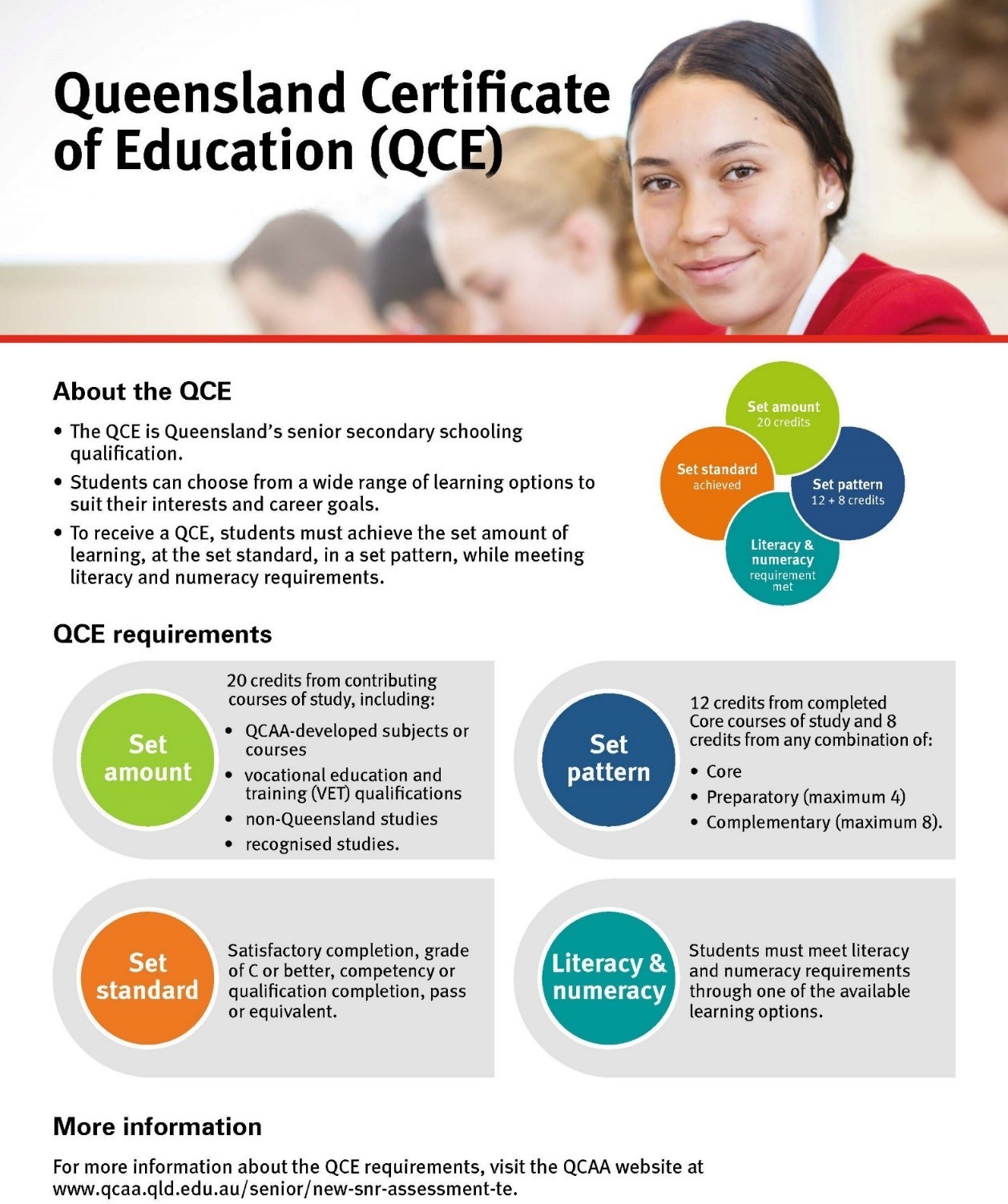The focus of our Senior Secondary curriculum is to assist students to develop pathways for their future and shape the leaders of tomorrow. Whether it is further education or employment, we support our students to develop 21st century skills by providing opportunities for personal growth in critical and creative thinking, personal and social capabilities, communication, collaboration, teamwork and information and communication (ICT) skills.
At Heatley Secondary College we offer a range of Queensland Curriculum & Assessment Authority (QCAA) general and applied subjects that build on the learnings from the P-10 Australian Curriculum. Students can also access a variety of Vocational Education and Training (VET) programs both within the school and from external providers. Students can choose a VET course as part of their main school subject selection, through the TCTC or TAFE Queensland, or as school-based traineeships and apprenticeships via external providers. Students choosing a VET subject have access to state of the art training facilities, including a fully functioning catering kitchen where students plan, prepare and sell a variety of food and drink options.

Senior subject selections.jpg)
Underpinning factors
All senior syllabuses are underpinned by:
- literacy — the set of knowledge and skills about language and texts essential for understanding and conveying content
- numeracy — the knowledge, skills, behaviours and dispositions that students need to use mathematics in a wide range of situations,
- 21st century skills — the attributes and skills students need to prepare them for higher education, work and engagement in a complex and rapidly changing world. These include critical thinking, creative thinking, communication, collaboration and teamwork, personal and social skills, and information & communication technologies (ICT) skills.
At Heatley Secondary College we offer a range of General and Applied subjects as well as VET certificate courses. All subjects build on the learnings from the P–10 Australian Curriculum delivered across Years 7–10.
General subjects:
General subjects are suited to students who are interested in pathways beyond senior secondary schooling that lead primarily to tertiary studies.
General syllabuses are developmental four-unit courses of study.
Units 1 and 2 provide foundational learning, allowing students to experience all syllabus objectives and begin engaging with the course subject matter. Assessment in Units 1 and 2 contributes to a QCE.
Units 3 and 4 consolidate student learning. Assessment in Units 3 and 4 is summative and student results contribute to a QCE and to ATAR calculations.
Assessment
Units 1 and 2 assessments
Assessment tasks for Units 1 & 2 mirror the type and format of assessment in Units 3 and 4. Schools report satisfactory completion of Units 1 and 2 to the QCAA.
Units 3 and 4 assessments
Students complete a total of four summative assessments — three internal and one external — that count towards the overall subject result in each General subject.
The results from internal assessment are combined with a single result from an external assessment. For most subjects this is 25%; for Mathematics and Science subjects it is 50%.
External assessment is:
- common to all schools
- administered under the same conditions at the same time and on
the same day - developed and marked by the QCAA according to a commonly applied marking scheme.
Applied subjects:
Applied subjects are suited to students who are primarily interested in pathways beyond senior secondary schooling that lead to vocational education and training or work.
Applied syllabuses are developmental four-unit courses of study.
Units 1 and 2 of the course are designed to allow students to begin their engagement with the course content, i.e. the knowledge, understanding and skills of the subject. Course content, learning experiences and assessment increase in complexity across the four units as students develop greater independence as learners.
Units 3 and 4 consolidate student learning.
Results from assessment in Applied subjects (Units 1-4) contribute to a QCE. Results from Units 3 and 4 may contribute as a single input to ATAR calculation.
Assessment
Assessment tasks for Units 1 & 2 mirror the type and format of assessment in Units 3 and 4.
Schools report satisfactory completion of Units 1 and 2 to the QCAA.
Applied syllabuses use four summative internal assessments from Units 3 and 4 to determine a student's exit result.
Applied syllabuses do not have external assessment.
Essential English and Essential Mathematics — Common Internal Assessment
Students complete a total of four summative internal assessments in Units 3 and 4 that count toward their overall subject result. Schools develop three of the summative internal assessments for each senior subject and the other summative assessment is a common internal assessment (CIA) developed by the QCAA.
The CIA for Essential English and Essential Mathematics is based on the learning described in Unit 3. The CIA is:
- developed by the QCAA
- common to all schools
- delivered to schools by the QCAA
- administered under supervised conditions
- marked by the school according to a common marking scheme developed by the QCAA.
The CIA is not privileged over the other summative internal assessment.
Vocational education and training (VET)
Students can access a variety of VET programs both within the school and from external providers. They can choose a VET course:
- as part of their main school subject selection
- through the TCTC or TAFE Queensland
- as school based traineeships and apprenticeships via external providers